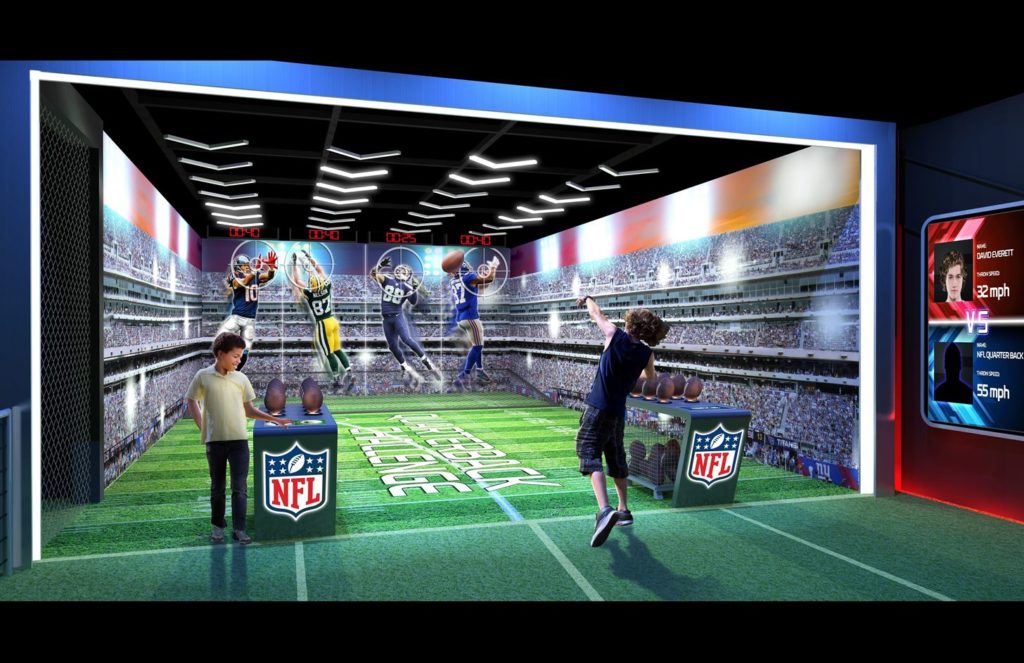Mixed Reality: How AR and VR are transforming the Fitness and Sports Industry

The Virtual Reality (VR) industry experienced a boom in the 1990s. Even though several projects failed, it was during this period that the groundwork for what would happen twenty years later was laid:
- In 2015, tools like the Samsung Gear VR, Google Cardboard, and Oculus Rift hit the market.
- In 2016, Augmented Reality (AR) became widely adopted, thanks to the Pokémon Go game.
This phenomenon has accelerated significantly in the last two years, placing the spotlight squarely on Mixed Reality’s latest major trend (MR).
The market's growth is being fueled by growing mobile and tablet device penetration, increasing business technology adoption, and vendors' increasing emphasis on price reduction. In 2020, the VR division accounted for the majority of the market share between AR and VR.
Virtual reality (VR) is growing in various industries, most notably gaming, and VR prices are falling, resulting in greater acceptance of the technology. VR provided users with an immersive experience, which is why gaming companies are integrating these features into their services and goods. Because of the various benefits of achieving a competitive edge over, the AR segment is expected to rise faster during the forecast period.
The use of virtual reality in sports provides viewers with an entertaining experience. It also provides valuable analytics for coaches and players to better their game. Here are five aspects that augmented reality in sports is proving to be highly beneficial.
AR and VR marveling in the Sports and Fitness Industry
The AR and VR market is divided into three divisions based on application: business, industrial, and residential, with the consumer division projected to retain the majority of the market share in 2028. The growth of this division is primarily due to an increased understanding of AR and VR. In the coming years, the number of gamers worldwide is expected to increase, resulting in increased demand for immersive and interactive games.
If virtual reality technologies can enhance sports fans' experiences at home, augmented reality applications provide fans in stadiums. As a result, AR apps allow you to enhance the stadium’s fan experience by providing real-time statistics on the athletes on the field, customising each fan's seat, and reminding fans where their friend is sitting.
Digital, augmented, or mixed sports environments are evolving, becoming more and more immersive in almost all fields, ranging from the enjoyment of content by fans to the growth, training, and recruitment of athletes, thanks to the enormous leap in technology over the last two years.
Factors that bolster the global market
The demand for AR and VR is being driven by the growing adoption of these technologies among businesses. The business sector is one of the most critical goals for domain players. Since all major hardware manufacturers, solution providers, and software developers are focusing on the market, the potential of AR and VR technologies in businesses is enormous. Furthermore, several Fortune 500 companies have begun to experiment with VR and AR technologies, with a handful of them already launching pilot projects.
The rapid adoption of tablet computers and smartphones is also propelling the AR and VR market forward. Smartphones are widely regarded as the primary hardware platform for virtual reality and augmented reality applications. Furthermore, by 2021, the number of smartphones is projected to reach 3.5 billion, reflecting a 9.3% rise from 2020 As a result, AR and VR companies concentrate their efforts on these devices to gain a foothold in the industry.
AR and VR are expected to continue to witness record growth in the coming five years despite the COVID-19 impacts and further make a crucial contribution to domestic economic recovery.
- To achieve a competitive edge, the market's major players are pursuing mergers and acquisitions and alliances with technology start-ups. For example, in June 2020, Facebook Technologies, LLC purchased Ready at Dawn, a VR-based video game development company, with an agreement to create games for Oculus Studios that include immersive VR-based content.
- Apple Inc. purchased NextVR Inc. in May 2020 to expand its virtual reality (VR) capabilities for entertainment and sports. Companies focus on providing quality services to their viewers with continuous creativity in their content and exploring different sectors with VR technology solutions as the market becomes more competitive.
2021: An Opportunistic Year for AR and VR
Mixed Reality has yet to demonstrate its full potential in the world of sports, but the future horizons are already visible. For example,
- emerging technology will boost athlete recruiting by turning university campuses into a point of contact for recruiters and agents to promote the search for new talent
- athletes will be able to visit stadiums, Olympic campuses, arenas and sports facilities, locker rooms, and other locations without having to drive; and athletes will be able to visit stadiums, Olympic campuses, arenas and sports facilities, locker rooms, and other locations without having to physically travel but through an immersive experience that goes well beyond looking at photographs
- We might also see new sports realities based on Mixed Reality in the future (although, for the sake of pure entertainment, Pokémon Go had the benefit of combining game elements with exercise, a union that could be developed more professionally and with more advanced technology, resulting in new sports and fitness).
Several sporting activities around the world are integrating virtual reality
It has dramatically enhanced the sporting atmosphere in the arena for both players and spectators. Human errors have been significantly reduced in virtual reality, which can drastically alter an incident’s outcome and create fair play possibilities. Even a single human mistake on the part of an official may have far-reaching effects on the players or teams involved. Players may use augmented reality to analyze decisions that they believe officials made incorrectly. Augmented reality applications are being used in sports activities such as Major League Baseball and soccer leagues worldwide.
The Hawk-eye device is one of the most commonly used virtual reality technologies in sports. Hawk-eye is a computer-based virtual reality solution used in various sports, including basketball, badminton, soccer, and volleyball. The technology uses visual tracking of the ball's or other objects' trajectory to predict its most probable direction. Because of its near-perfect precision, hawk-eye technology has become the go-to solution for event planners.
Another way that virtual reality can be used in stadiums is to provide fans with immersive experiences. Panasonic has already taken advantage of this idea, launching an augmented reality solution at CES 2018.
Fantasy sports are becoming increasingly common. Businesses may use virtual reality in their fantasy sports app to provide consumers with a more immersive experience. The company ‘AR Sports' has already filed a patent for an augmented reality solution integrated into popular fantasy sports applications. It uses geolocation technology to help users find players within their current radius to add to their fantasy team. A randomized proprietary algorithm can shift the available players into a user's radius. They would set notifications for their favorite players to be alerted when they appear within a certain distance.
In sports, virtual reality has dramatically enhanced success and entertainment. Augmented reality has a lot of potential for players, fans, and companies in the sports industry. The applications of virtual reality in sports will be infinite as technology advances.
From 2021 to 2028, APAC is projected to lead the augmented reality and virtual reality industry, with the highest CAGR
As an emerging market, APAC sees dramatic shifts in the acceptance of new technologies and developments. APAC is seeing an increase in the adoption of emerging technologies due to several display panel manufacturers in the area. In the healthcare, commercial, and consumer sectors, APAC’s AR & VR market is expected to expand rapidly. The growing number of players in the region is expected to boost the AR and VR market's growth. The rapid expansion of the commercial and consumer markets is the primary driver of APAC’s AR and VR market. Growing consumer and commercial markets and increased investment in countries like Japan, India, and China are expected to propel the AR and VR market in APAC forward.
Conclusion: The effect of technology on professional sports' future
In sports, virtual reality has yet to reach its full potential. It will, for example, make the recruitment process go much more smoothly by making college campuses seem closer to recruits. Virtual reality allows athletes to visit arenas, locker rooms, weight rooms, and nearly any other venue and aspect of their future team without ever leaving their homes or boarding a plane.
New sports-focused entirely on VR and its sister technologies, virtual reality and mixed reality, may also arise. E-sports have been around for a while, even though many people contend that video games aren't sports.
The possibilities and opportunities are still being discussed, and we can foresee several fun surprises shortly. While it would be an exaggeration to assume that virtual reality would soon supplant real-life experience, there is no question that it would forever change the sports industry.








